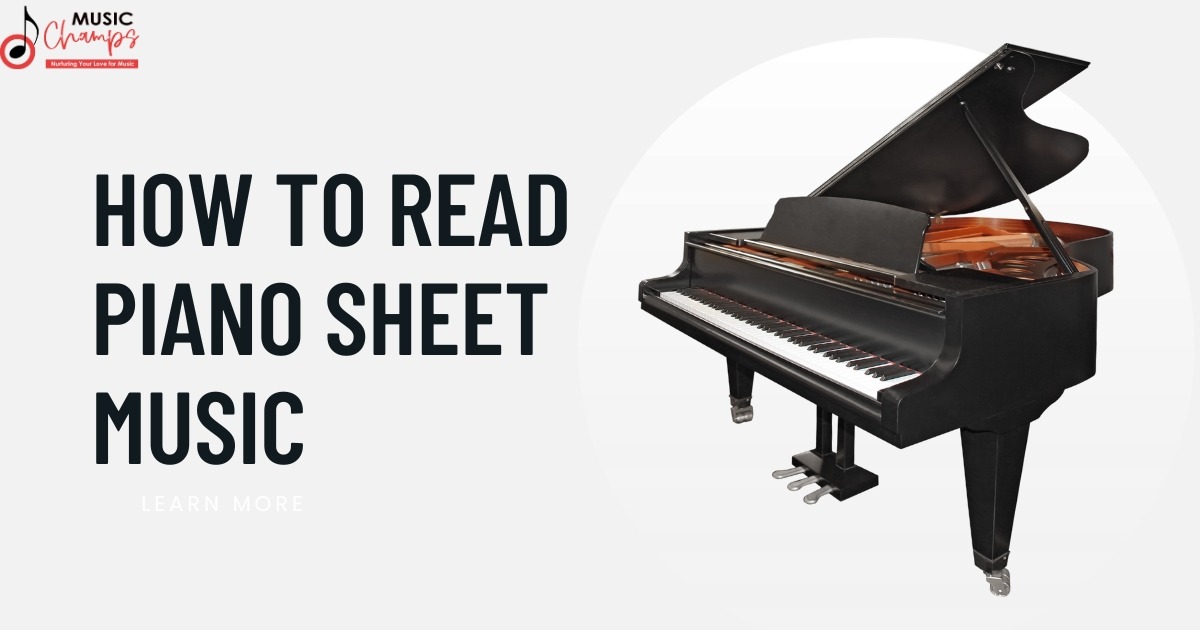...
How to Read Piano Sheet Music (Beginner’s Guide)

To people who have never seen symbolic notes and are still wondering what they are, staff notes seem a horrific sheet that haunts pianists and other Western musicians but what if I say that reading staff notes is easier than another form of note-reading? In this blog, we will understand in depth the method of reading sheet music.
The Grand Staff
The grand staff is the combination of two complete staffs which is made up of two different clefs – a treble clef and the bass clef. A staff is a diagram that has 5 lines and 4 spaces. A grand staff is used when we play both hands and lower and middle octaves on the piano.
The Treble Clef (G Clef)
The treble clef is also known as the g cleg. It consists of 9 notes starting from the middle e and ending at higher f. It is usually played with the right hand and consists of the middle and the higher notations.
The Bass Clef (F Clef)
The bass clef is also known as the f clef and is the lower clef in the grand staff. It consists of 9 lower octave notes starting from the lower to lower g and ending at lower a. It is usually played with the left hand and sometimes is used as an accompaniment to the treble clef.
Ledger Lines
Not all the notes are covered in the treble and the bass clef. Some extra notes can not be represented in the staff and hence small lines called ledger lines are drawn above or below the staff to denote extra notes.
Note Duration and Rhythm
Everything in music is based on rhythm and counts. There are notes and rests of different count numbers in sheet music. There are different types of notes like a quarter note, half note, whole note, eighth note, sixteenth note, 32nd note, etc. Also, there are different types of rests based on duration.
Key Signatures
There are different scales in music. There are two types of scales in music namely – the major scales and the minor scales. The staff indicates these scales using key signatures consisting of a series of sharps or flat symbols to indicate a particular major or minor scale.
Dynamics and Articulations
Dynamics indicate the intensity at which a note is to be played or sung. They are of two major types namely – the piano (soft) and the forte(loud). Articulations are the marks that tell the style in which the piece is to be played.

Practice Tips
- Download a good app that provides practice portions
- Focus on both hands and left hand significantly.
- Don’t play the clefs separately but play them together from day one.
- Get a quality coach to guide you throughout the practice.

Additional sources
- How to Read Notes Fast – The Landmark System – https://www.youtube.com/watch?v=jSOU-J9KHbg
- How To Read Notes (Beginner Piano Lesson) – https://www.youtube.com/watch?v=gEI7uYOCQXo
- The Only Way to Get Better At Sight Reading – https://www.youtube.com/watch?v=K2DrG2CpDwA


